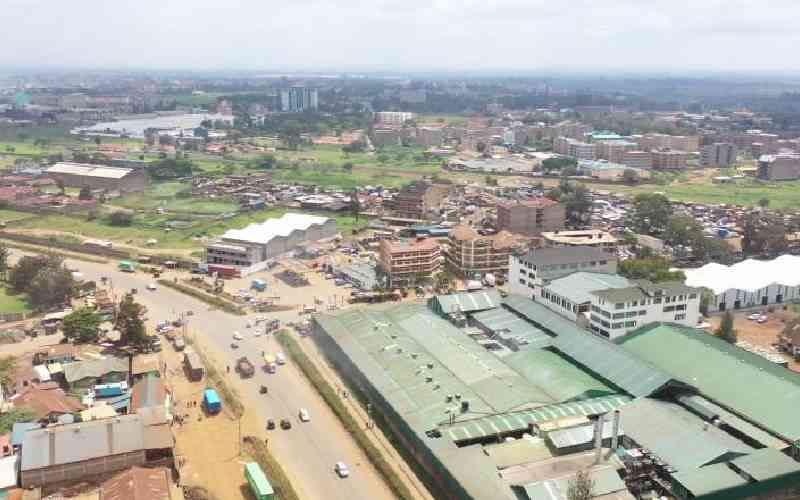The move by Kiambu Governor Kimani Wamatangi and his team to push for Thika town’s elevation to city status is both bold and timely. This initiative deserves full support from urban planners, architects, surveyors, and all stakeholders in the built environment. If successful, Thika would become the sixth city in Kenya under the framework of the Urban Areas and Cities Act which sets the threshold for towns to become cities. This is no mean achievement, but it must be anchored in deliberate, resilient, and inclusive planning to avoid repeating the mistakes that have haunted our urban centres.
Many urban areas continue to grapple with the consequences of poor or absent planning. For instance, a visit to Githurai, also in Kiambu County, reveals the scars of uncoordinated growth and urban sprawl. Roads measuring less than 9 metres, crazy congestion, absence of truncations, confusions/chaos, lack of open spaces and playgrounds making children to play on the roads, and the unchecked rise of highrise apartments exerting pressure on already overwhelmed amenities are now defining features of the area. This is a textbook case of what Patrick Geddes warned against: “A city is more than a place in space, it is a drama in time.” The failures in Githurai dramatise the cost of neglecting structured planning. They remind us that “failure to plan is planning to fail.”
Land, being finite and inelastic, demands prudent and scientific management to ensure optimal economic use, social cohesion, and environmental sustainability. As Constantinos Doxiadis emphasised in his concept of Ekistics, the science of human settlements, land must be planned as an interdependent system of nature, networks, shells, and society. Thika’s case must therefore be handled with foresight to guarantee a city that is livable today and sustainable for future generations. This is where physical and land use planning becomes the guiding tool for investment and spatial justice.
Globally, well planned cities like Vancouver, London and Chicago demonstrate the dividends of structured urbanism. Their orderly road networks, well-zoned CBDs, pedestrian-friendly streets, public parks, and integrated transport systems reflect deliberate design, not accident. Compare this with the some of the meandering roads of Nairobi or the chaos of Githurai, and one sees the stark difference between planned growth and urban anarchy. Deliberate planning creates efficiency, order, and harmony in urban functions, while lack of it births chaos and confusion.
Follow The Standard
channel
on WhatsApp
Wamatangi’s push for Thika’s city status must therefore be guided by a single question: How do we transform a historically industrial town into a thriving modern city without replicating the mistakes of Githurai? Thika’s industrial legacy, proximity to Nairobi, and its education and sporting functions provide a strong foundation. The expansion of Thika Superhighway already catalysed massive growth, and with the right special urban planning interventions, Thika could emerge as a vibrant conurbation complementing Nairobi rather than degenerating into its chaotic hinterland.
To achieve this, rezoning of Thika town is inevitable. Urban functions must be reorganised to reflect modern demands, markets should be relocated and expanded, new bus terminals and passenger drop-off zones created, boulevards and green corridors introduced, and hawker markets designated. This is in line with Geddes’ timeless call to “diagnose before you prescribe”.
Public participation will also be crucial. As Thika transitions into a city, residents must be sensitised about zoning changes, land rate adjustments, building typologies, and the rationing of urban services. Without citizen buy-in, even the most progressive urban plans risk resistance and failure.
Infrastructure provision will be another critical pillar. Thika must prioritise new bypasses, connector roads, an inner core circulation system, abattoirs, adequate water and power supply, and modern sewerage systems. Walkability, too, must be at the heart of design. Pedestrian walkways, cycling lanes, and non-motorised transport facilities must be prioritised.
Drainage and stormwater management also demand urgent attention. Thika’s perennial flooding can only be addressed through a well-planned stormwater system, with recycling opportunities for urban agriculture.
Follow The Standard
channel
on WhatsApp
By Lawrence Kagwi
